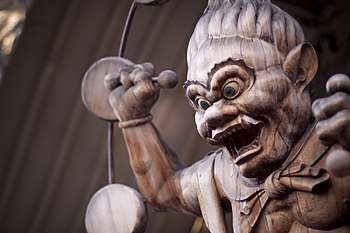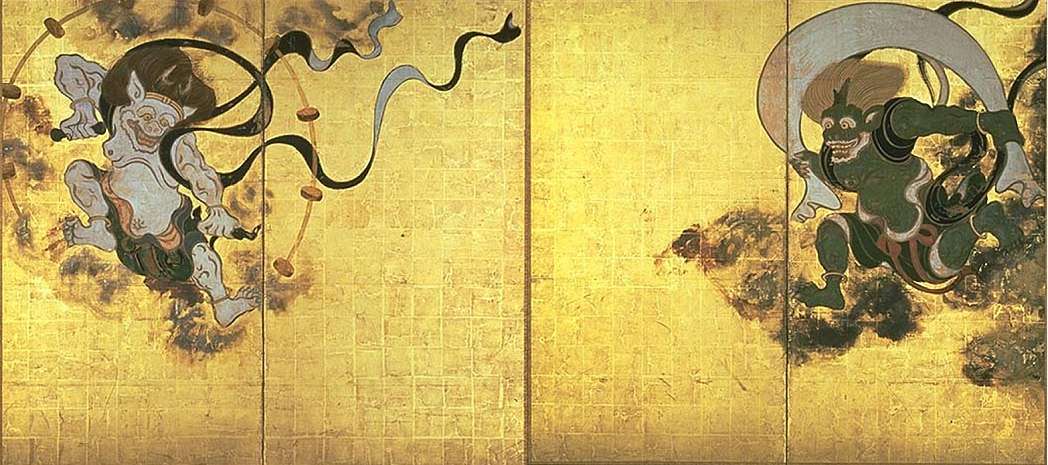Raijin

Raijin (雷神) is a god of lightning, thunder[1] and storms in the Shinto religion and in Japanese mythology.
His name is derived from the Kanji characters for rai (雷, "thunder") and shin (神, "god"). He is typically depicted as a demon-looking spirit beating drums to create thunder, usually with the symbol tomoe drawn on the drums. He is also known by the following names:
- Raiden-sama: rai (雷, thunder), den (電, lightning), and -sama (様, a Japanese honorific of reverence, glossed as master)
- Yakusa no ikazuchi no kami: Yakusa (八, eight) and ikazuchi (雷, thunder) and kami (神, spirit or deity)
- Kaminari-sama: kaminari (雷, kaminari, thunder) and -sama (様, master)
- Narukami: naru (鳴, thundering/rolling) and kami (神, spirit or deity)
Myths

Raijin was created by the divine pair Izanami and Izanagi after the creation of Japan. There is a legend which says the eight lightning gods were charged with protection of the Dharma by the Buddha. This kind of syncretism, called Shinbutsu-shūgō, is not unusual in Japan, even after the 1868 order that formally separated Shinto and Buddhism. Raijin's companion is the demon Raiju. In Japanese art, the deity is known to challenge Fūjin, the wind god.
Some Japanese parents tell their children to hide their belly buttons during thunderstorms. This is due to a folk belief that Raijin is sometimes credited with eating the navels or abdomens of children, and in the event of thunder, parents traditionally tell their children to hide their navels so that they are not taken away.
See also
- List of thunder gods
- Indra, Hindu god of thunder
- Leishen (Chinese: 雷神), Chinese god of thunder in Chinese Folk Religion and Taoism
- Tenjin (kami), spirit related to natural disasters and scholarship
References
- ↑ Ashkenazi, Michael (2003). Handbook of Japanese Mythology. ABC-CLIO. p. 236. ISBN 978-1-57607-467-1. Retrieved 2008-12-16.
External links
| Wikimedia Commons has media related to Raijin. |
- Netsuke: masterpieces from the Metropolitan Museum of Art, an exhibition catalog from The Metropolitan Museum of Art (fully available online as PDF), which contains many representations of Raijin

